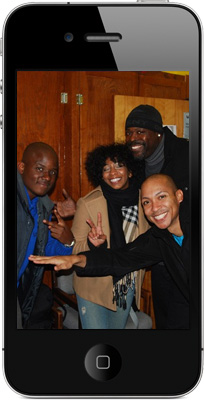clockThis article was published more than 1 year ago
In recent weeks, I have published two guest pieces about college rankings — one titled “Harvard flunks in this college ranking system” and the second titled “Why U.S. News may have to rethink how it creates college rankings.” Here is a new one that broadens the debate.
The first relates to what many consider to be flawed methodology used in the creation of the famous U.S. News & World Report’s annual college rankings (the latest version was released this month), which reward large endowments and resources most schools don’t have. The second piece explains how one of the tools U.S. News uses — something called the Carnegie Classifications, a framework for classifying institutions of higher education — is being changed to include how well institutions impact students’ social and economic opportunity.
The commentary below looks deeper into the origins of college rankings and how historically Black colleges and universities fare. It was written by Ethan Ris, an assistant professor of higher education administration at the University of Nevada at Reno, and a former fellow with the National Endowment for the Humanities and the National Academy of Education. He is the author of the new book “Other People’s Colleges: The Origins of American Higher Education Reform.”
The U.S. News “Best Colleges” rankings dropped this month to great attention. Even those of us who find the whole spectacle gross still can’t help but peek at who made No. 1 this year — and of course at where our alma maters ended up. But here’s the thing about rankings: Even though their quantitative data gives them the veneer of objectivity, they are extraordinarily subjective. Before running the numbers, the rankers have to decide which metrics signify “quality.” These decisions affect the horse race at the top of the list, but they also determine who makes the list at all.
For that reason, I am far less interested in whether Princeton University got first place again this year (it did) than in where historically Black colleges and universities ended up. I want to see where land-grant institutions ranked, and religious colleges, and universities with a focus on preparing future teachers. I’ll give you a hint: nowhere near the top.
The point of rankings like this is to codify what counts as quality in American higher education. U.S. News certainly did not invent this game. As I describe in my new book, it dates to 1906. In that year, the Carnegie Foundation for the Advancement of Teaching, an agency devoted to higher education reform, published its annual “Accepted List” of high-quality colleges and universities that were eligible for its grants. When it did so, the foundation established blatant patterns of exclusion that are still with us in modern rankings.
There were zero public institutions among the 52 on the first Carnegie Accepted List. On the new U.S. News list, you need to scroll down to the No. 20 spot to find the first public university — in a nation where 73 percent of college students attend a public institution. In fact, there are only 12 public universities in the top 40, and half of those are campuses in the singular University of California system.
Since there were no public universities on the 1906 list, there were also no true land-grant institutions. In the new U.S. News rankings, no stand-alone land-grant school (i.e., one that is not also a state flagship university) appears until Purdue at No. 51. There were no religious colleges on the Carnegie Accepted List, because the foundation barred them from inclusion. This policy led dozens to drop their religious affiliations over the next decade, which is part of the reason that so few elite schools today are religious (a handful of Catholic institutions are the notable exceptions).
Things get grimmer with minority-serving institutions. There were no schools that enrolled significant numbers of Black students on the 1906 list, a trend that held until Fisk University made it into the rankings in 1921. Not surprisingly, no historically Black institutions appear on the U.S. News list until Howard University, at No. 89.
For other HBCUs, you need to look at the alternative “liberal arts colleges” list, where they rank alongside schools whose national importance they greatly overshadow. Spelman appears at No. 51 (tied with the 322-student Principia College), Morehouse at No. 124 (tied with the 482-student Randolph College), and Fisk and Tougaloo at No. 151, where they narrowly trail Covenant College in Lookout Mountain, Ga. As for the 487 Hispanic-serving institutions across the United States, only a single non-UC school (Rutgers) appears on the top-100 universities list.
It is far too easy to look at this historical continuity and attribute it to an enduring lack of quality in certain types of colleges and universities. But the opposite is true: Historical exclusion, based on overt prejudice and elitism, is directly linked to the low status of vast swaths of American higher education today.
We long ago decided what counted as quality — wealth and Whiteness, above all — so we should not be surprised that so little has changed. And the annual Carnegie lists were hardly alone in perpetuating the pattern of exclusion. They were abetted by an elitist 1911 ranking of institutions by the federal Bureau of Education; the decades-long refusal of regional accreditation agencies to accredit minority-serving institutions; the inability of low-status institutions to gain access to the massive federal grants that followed World War II; and the revamped Carnegie Classification rankings that emerged in the early 1970s and still help steer the U.S. News ratings today.
Now, the leaders of the Carnegie Foundation and the American Council on Education say they are collaborating to revamp the classifications. Their new system will evaluate colleges and universities on measures well beyond research and graduate education, which currently drive much of the sorting. They intend to reward schools for virtuous work including “increasing access to college, retaining and graduating students, and supporting job attainment and debt management.”
It is refreshing to see the foundation that kicked off our national college rankings obsession promise to lead in a new direction. But I don’t think that the genie can be put back in the bottle. As the centerpiece of its reforms, Carnegie will soon release a new “Social and Economic Mobility Classification.” Will this lens — which will surely just augment traditional metrics, not replace them — change anything about the status hierarchy that has captivated us for over a century?
Furthermore, other groups have already tried to push alternative ranking systems. Most measure things like “economic mobility,” which reduce the purposes of college to an increased annual salary. They also deliberately skew their data to demote elite schools, giving the impression that low-income students would be vastly better off attending California State University at Dominguez Hills (No. 2 in Third Way’s Economic Mobility Index) than Princeton (No. 426).
It’s impossible to imagine U.S. News using these new frameworks to significantly shake up its top-100 list. And let’s be honest: Even for the metrics that Carnegie will now start recognizing — retaining students, graduating them debt-free and setting them up for good jobs — Princeton is still going to win.
Rankings are rooted in exclusion. For every winner, there are dozens of losers. Whether we decide to penalize colleges and universities for serving students of color, failing to bring in grant money, or preparing students for important but modestly paid jobs like teaching, we are making judgment calls about which schools deserve to thrive and which deserve to wither. That was the whole idea in 1906, overtly stated by reformers who wanted the excluded colleges to suffer “death from inanition.”
We are less direct today, but when we create ranking lists and obsess over them, we are making sure that American higher education will continue to be a zero-sum game.









More Stories
Before It’s Too Late: Why Black Families Must Archive Their Histories – bet.com
Confederates Whistle Dixie Tunes and Black MAGA Applauds – The San Diego Voice & Viewpoint
The skies have no preference – Black American fighter pilots in the USAF – 142wg.ang.af.mil